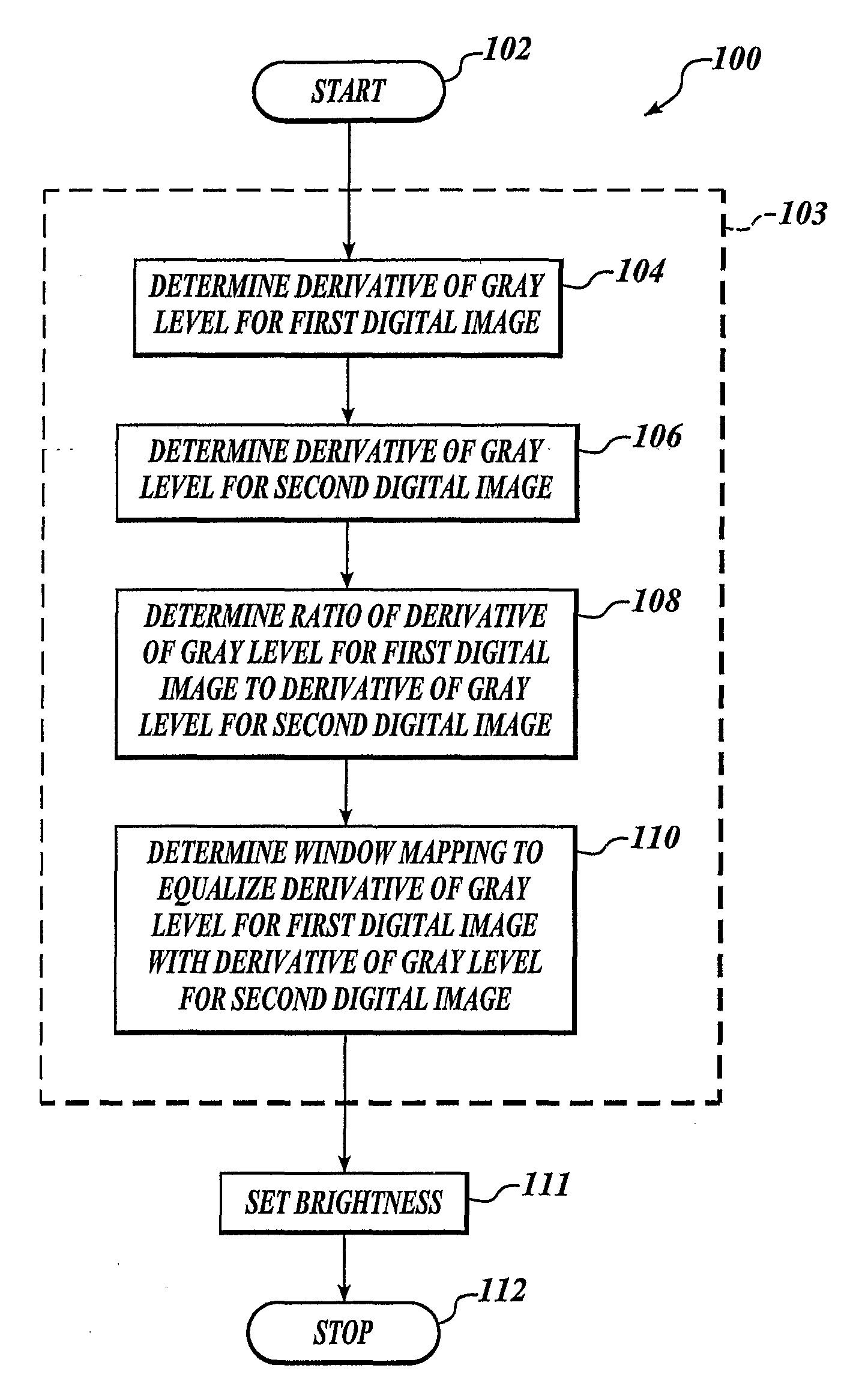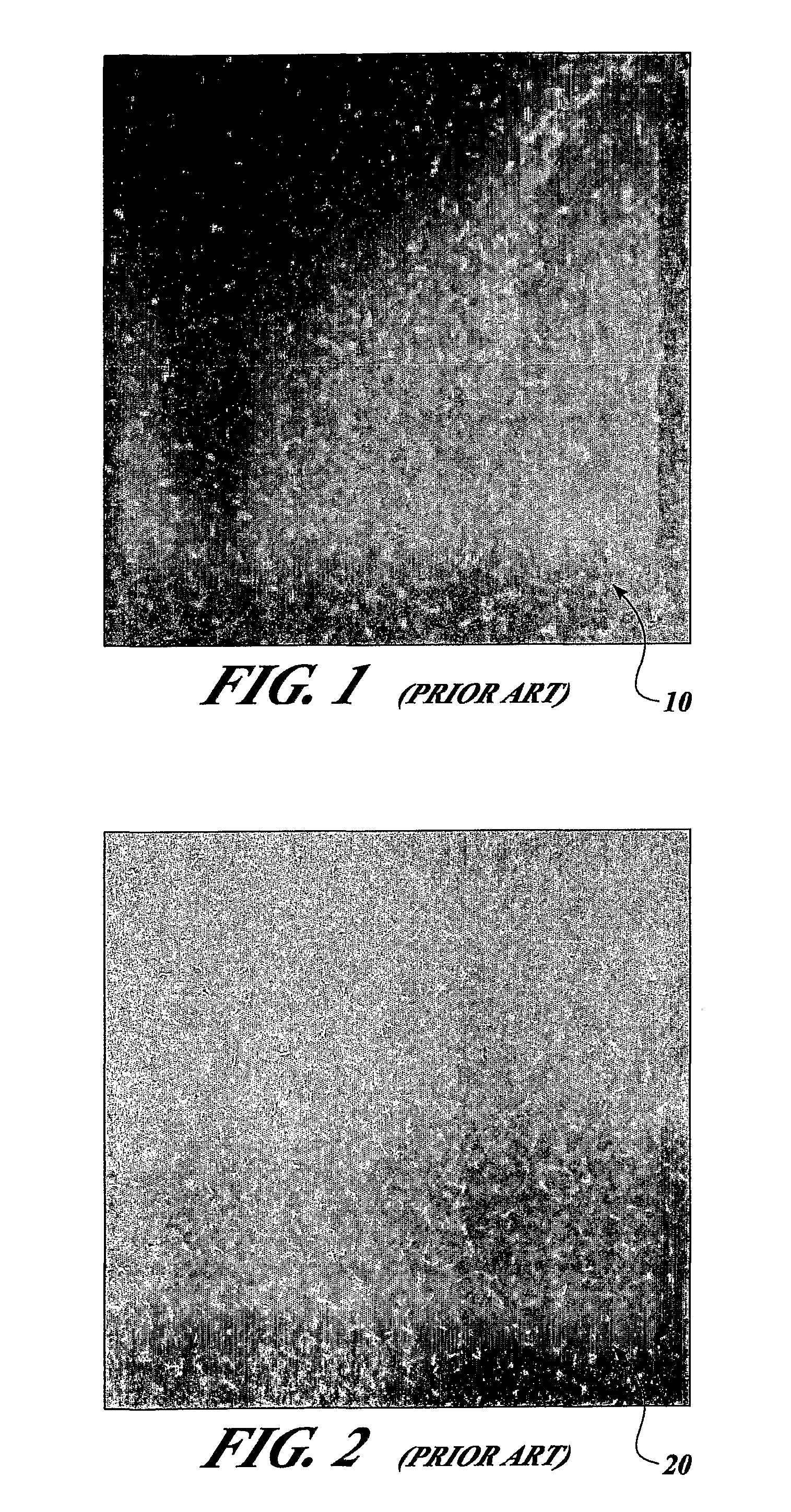Polymeric Foam with Irrecgular Surfaces Nad Preparation Thereof
a polymer foam and surface technology, applied in the field of non-destructive evaluation, can solve the problems of aluminum casting inspection costs, high cost and time-consuming traditional silver-halide film techniques, and the implementation of digital radiography for a number of industrial uses, so as to facilitate the use of digital reference images and facilitate image comparison
- Summary
- Abstract
- Description
- Claims
- Application Information
AI Technical Summary
Benefits of technology
Problems solved by technology
Method used
Image
Examples
Embodiment Construction
[0025] By way of overview, embodiments of the present invention provide methodologies and systems to compare images with different levels of contrast. Contrast is normalized between the images with different contrast levels and brightness is set. According to an aspect of the present invention, when normalizing contrast a derivative of gray level is determined for a first digital image having a first contrast level, and a derivative of gray level is determined for a second digital image having a second contrast level that is greater than the first contrast level. A ratio of the derivative of gray level for the first digital image to the derivative of gray level for the second digital image is determined, and the derivative of gray level for the first digital image is equalized with the derivative of gray level for the second digital image. According to another aspect of the present invention, brightness may be set manually or automatically. The first digital image may be a digital r...
PUM
 Login to View More
Login to View More Abstract
Description
Claims
Application Information
 Login to View More
Login to View More - R&D
- Intellectual Property
- Life Sciences
- Materials
- Tech Scout
- Unparalleled Data Quality
- Higher Quality Content
- 60% Fewer Hallucinations
Browse by: Latest US Patents, China's latest patents, Technical Efficacy Thesaurus, Application Domain, Technology Topic, Popular Technical Reports.
© 2025 PatSnap. All rights reserved.Legal|Privacy policy|Modern Slavery Act Transparency Statement|Sitemap|About US| Contact US: help@patsnap.com



